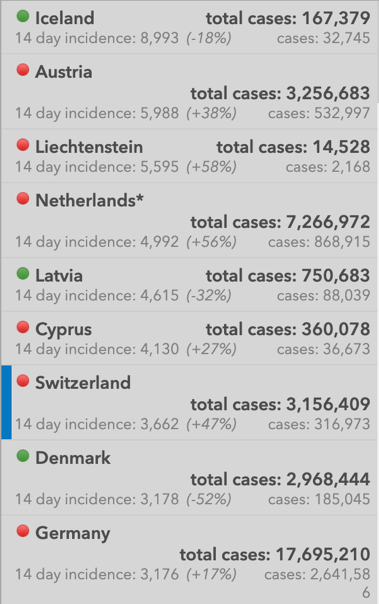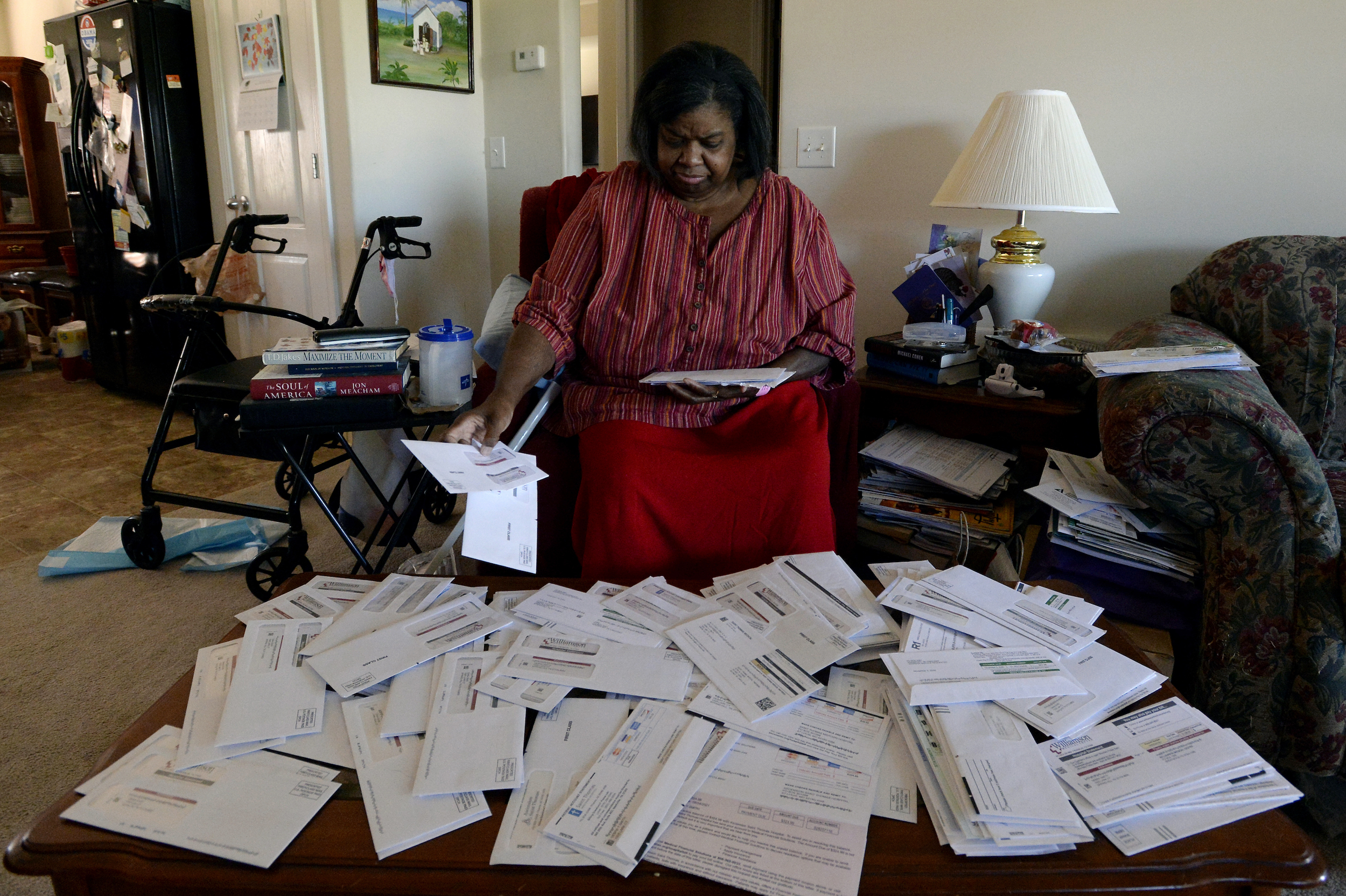 Covering COVID-19 is a daily Poynter briefing of story ideas about the coronavirus and other timely topics for journalists, written by senior faculty Al Tompkins. Sign up here to have it delivered to your inbox every weekday morning.
Covering COVID-19 is a daily Poynter briefing of story ideas about the coronavirus and other timely topics for journalists, written by senior faculty Al Tompkins. Sign up here to have it delivered to your inbox every weekday morning.
A year ago, the rising price of lumber drove the price of construction — especially house construction — way up. The increased prices and supply shortage slowed down construction. Then, in summer 2021, prices fell back to 2019 pre-pandemic levels.
Now, lumber prices, like most commodities, are rising again. They are now about 15% lower than that peak in May 2021, but still about three times their average pre-pandemic price, according to Random Lengths, an industry website.
Lumber prices are continuing to surge amid Russia’s invasion of Ukraine, and traders could soon see even bigger price swings.
Futures have been on a wild ride since the onset of the COVID-19 pandemic, and they soared to a record high of $1,711 per thousand board feet last May. After tumbling through the spring and summer, they have been rebounding and got a fresh jolt from Russia’s war. Since Vladimir Putin ordered troops into Ukraine, prices have jumped 14% to $1,452, putting them just 15% below the all-time peak.
The National Association of Homebuilders estimates that the recent rise has added $18,600 to the price of a newly built home. CNBC points out that even if you rent, you are paying for higher construction costs:
(The high lumber prices) also added nearly $7,300 to the cost of the average new multifamily home, which translates into households paying $67 a month more to rent a new apartment.
There are several reasons behind the inflation, but it’s mostly that sawmills can’t keep up with demand. Sawmill output dropped at the start of the pandemic and while it has recovered some, it is still plagued by labor shortages. Compared to the increase in housing starts, sawmill output is significantly behind.
Other issues inflating lumber prices include ongoing supply chain disruptions, tariffs on Canadian lumber imports and an unusually strong wildfire season in the American West and in British Columbia.
Even with COVID-19 cases soaring, governments end restrictions

Women wearing face masks walk by an ad reading ‘Find back your smile’ outside the Louvre Museum in Paris, France, Monday, March 14, 2022. France lifted most COVID-19 restrictions Monday, allowing people to remove face masks in almost all places and allowing unvaccinated people back into restaurants, sports arenas and other leisure venues. (AP Photo/Francois Mori)
The German government is ending mask mandates in stores, restaurants and schools this weekend, just as the country records its highest rate of new cases since the pandemic began. It is an illustration of how difficult it is to slow the momentum of “getting back to normal,” even while the science is telling us to be careful. Germans are dying from COVID-19 at a rate of more than 260 people a day. And that rate is increasing.
France will end most of its restrictions Monday. The government will also scrap plans for a vaccine pass and mask mandates for schools and public places. Canada just announced it will lift its pre-entry test requirement for fully vaccinated travelers beginning April 1.
We do not know why, but the new BA.2 variant is spreading more slowly in the United States than in Europe … so far. One theory is that so many Americans were infected with the BA.1 omicron variant that it may have prompted enough immunity that BA.2 won’t hit the U.S. as hard. But that is just a guess since we do not know yet if infection from one version of the virus protects against the other and, if so, how long such immunity lasts.
Britain just listed its COVID-19 restrictions. Its infection rate is rising fast again. Hospitalizations are up 17% in one week. While the rate is still well below the peak omicron outbreak last year, nobody knows if that is the level this outbreak is heading.
A dozen European countries have rising COVID-19 rates. Even while the United Kingdom, Germany, Greece, Switzerland and Austria’s rates are rising, other European countries — including Denmark, Norway and Portugal — are seeing dropping rates.

(World Health Organization)
BA.2 has been growing steadily in the US. Last week, the CDC estimated it was causing about 12% of new Covid-19 cases here.
Meanwhile, BA.2 now accounts for more than 50% of cases in the UK and several other European countries.
“The tipping point seems to be right around 50%,” said Keri Althoff, an epidemiologist at Johns Hopkins Bloomberg School of Public Health. “That’s when we really start to see that variant flex its power in the population” as far as showing its severity.
In the past two years, a widespread outbreak like the one now being seen in Europe has been followed by a similar surge in the United States some weeks later. Many, but not all, experts interviewed for this story predicted that is likely to happen. China and Hong Kong, on the other hand, are experiencing rapid and severe outbreaks, but the strict “zero covid” policies they have enforced make them less similar to the United States than Western Europe.
“It’s picking up steam. It’s across at least 12 countries … from Finland to Greece,” said Eric Topol, director of the Scripps Research Translational Institute in San Diego, who recently posted charts of the outbreak on Twitter. “There’s no question there’s a significant wave there.”
As I mentioned yesterday, the White House is using the outbreak in Europe and Asia as leverage to urge Congress to approve billions more dollars to keep tracking COVID-19 and produce therapeutics for people who do get infected.
Bird flu is now in 15 states, spreading fast
About 7.5 million birds have been infected with the highly pathogenic avian influenza virus in 15 states.
Turkey and chicken flocks in Wisconsin, Maryland, Iowa and Delaware have been especially hard hit. Go here to see the latest USDA infection data state-by-state.
The CDC considers the risk to the general public from these infections in wild birds, backyard flocks, and commercial poultry, to be low. The Missouri Department of Ag says it is still safe to eat poultry if it is properly handled and cooked. The department also says spread from birds to people is rare, but can happen. The Missouri Department of Health and Senior Services is working with local health agencies to monitor people who have a higher risk of exposure because of their jobs.
This map — which you should think of like a weather radar map — shows where birds are migrating right now. The higher the bird population, the greater the risk of the spread of the avian flu.
The CDC says avian flu (or bird flu) is caused by influenza viruses that occur naturally among birds. The highly pathogenic H5N1 variant is deadly to domestic fowl (such as chickens) and can be transmitted from birds to people.
Xylazine, the veterinary tranquilizer that is killing people
While our collective attention was focused on the more than 900,000 people in America who died from COVID-19 in the last two years, another 100,000 died from drug overdoses. It is a new record for drug deaths in a single year and now there is a new culprit.
New research documents how a tranquilizer called Xylazine is increasingly showing up as an additive to a range of street drugs and is killing people — a lot of people. The Drug Enforcement Administration has been tracking deaths associated with this drug since 2015 and the figures have increased every year since. Read this summary of the researchers’ findings:
In 10 jurisdictions – representing all four US Census Regions – xylazine was increasingly present in overdose deaths, rising from 0.36% of deaths in 2015 to 6.7% in 2020.
The highest xylazine prevalence data was observed in Philadelphia, (25.8% of deaths), followed by Maryland (19.3%) and Connecticut (10.2%).
The study found that the tranquilizer is an additive to cocaine and heroin that is laced with deadly fentanyl. Users say the xylazine lengthens the short duration of fentanyl.
Stat talked with one of the researchers:
“It’s been a structural shift, and it’s caught on,” said anthropologist Philippe Bourgois of UCLA, one of the authors of the paper and a member of the team who did the work in Philadelphia, which involved living for stretches in local neighborhoods to study drug markets, poverty, and violence.
Notably, the study found the powerful synthetic opioid fentanyl, which has come to dominate regional drug supplies, in nearly every xylazine-involved death as well, indicating it wasn’t just the tranquilizer that was causing these overdoses. Experts are still trying to understand the risks of xylazine, but they’re worried the drug — which is not an opioid but acts as a sedative — can increase the chances of a fatal overdose when combined with drugs like fentanyl because it can exacerbate the respiratory depression that opioids cause. It might also make it harder to reverse those overdoses with naloxone, which is designed to work on opioids.
The researchers sounding the alarm over xylazine say medical examiners should test all overdose cases for the drug so they can warn health care providers who treat those cases that the local drug market now includes this contaminant. Health care providers may need to treat overdose patients with more than a dose of naloxone, which they routinely administer now for opioid overdoses.
The point of this new research is to help you understand that America’s overdose epidemic is not just from opioids, but now opioids mixed with synthetic drugs. And, Stat says, this is a trend, not a blip in the data, as borne out in this passage: “Last week, an overdose cluster in Austin killed two people and hospitalized roughly a dozen others. Local officials have said they suspect xylazine played a role.”
Feds may ban credit reports from including medical debt

Debra Smith, 57, sorts through her medical bills in her living room on Thursday, Oct. 7, 2021, in Spring Hill, Tenn. Smith, who has health problems that prevent her from working, has about $10,000 in unpaid medical bills. (AP Photo/Mark Zaleski)
This could be a significant development for millions of Americans, especially for those who ran up significant medical costs during the pandemic.
The federal Consumer Financial Protection Bureau says about one out of five U.S. households has some level of medical debt and that debt may appear up on your credit report, meaning it costs you more to borrow money, to buy a car or a home. The CFPB is considering whether medical bills should be a part of your credit report at all.
The bureau just released a report that says:
Medical debt is the most common collection tradeline reported on consumer credit records. People also report being contacted by debt collectors about medical debt more than any other type of debt. While medical debt has long played an outsized role on credit reports, concerns about medical debt collections and reporting are particularly elevated due to the COVID-19 pandemic. Many people have incurred pandemic-related medical debt. Frontline workers may be particularly likely to have pandemic-related medical debt since they have more exposure to the virus but are less likely to have health insurance than the general population.
CFPB research shows $88 billion in medical debt on consumer credit records as of June 2021. The total amount of medical debt in collections in the U.S. is likely higher, since not all medical debts in collections are furnished to consumer reporting companies.
Most medical debt collection tradelines on consumer credit reports are under $500, although many people with medical debt have multiple medical collection tradelines.
The report says medical debt is “less predictive” about a person’s future payments than other kinds of debt. It says when people fear what medical debt will do to their credit, they may avoid getting medical care.
The New York Times examines the new report:
Medical debt, unlike a mortgage or car loan, is often incurred involuntarily. People get sick or are injured in accidents and may end up with a bill they can’t afford. Several prior reports, including one last year in JAMA, have suggested that medical debt is becoming even more worrisome, particularly in states that haven’t expanded Medicaid coverage.
The Consumer Financial Protection Bureau says it is aware that people who are locked in battles with their insurance companies over unpaid medical bills may surrender and pay their bills just to avoid the bills ending up as marks on their credit reports. The CFPB is considering whether it will forbid credit reporting agencies from including medical bills on credit reports.
We’ll be back Monday with a new edition of Covering COVID-19. Are you subscribed? Sign up here to get it delivered right to your inbox.








